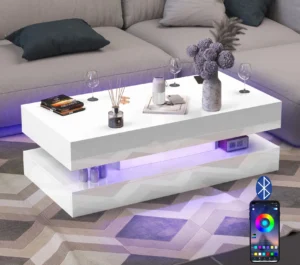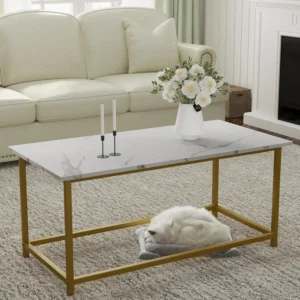The Allure and Impact of Oversized Mid-Century Coffee Tables in Modern Homes
When we talk about oversized mid-century coffee tables, we’re referring to pieces that typically exceed 40 inches in length or 30 inches in width—dimensions that command attention in any room. These substantial tables aren’t just functional surfaces; they’re architectural statements that anchor your entire living space.
Mid-century design’s enduring appeal lies in its perfect balance of form and function. Born from the design revolution of the 1940s through 1960s, these pieces feature clean lines, organic curves, and a timeless quality that feels simultaneously vintage and contemporary. The oversized versions of these classics take these principles and amplify them, creating pieces that demand thoughtful space planning.
Recent interior design trends show that statement furniture is gaining significant traction, with over 65% of interior designers reporting increased client requests for bold, conversation-starting pieces rather than subtle, background elements. An oversized mid-century coffee table perfectly meets this desire, serving as both a practical surface and a design centerpiece.
The beauty of these tables lies in their duality—they’re expansive enough to host game nights, display treasured collections, or accommodate multiple guests, yet their design language remains elegantly restrained. This creates a fascinating space planning puzzle: how to highlight such a substantial piece without overwhelming your room?
Working with large mid-century coffee tables requires careful consideration of scale, proportion, and flow—challenges we’ll tackle throughout this guide to help you create a harmonious, functional space around your statement piece.
Strategic Benefits: Why Choose an Oversized Mid-Century Coffee Table?
Before diving into the “how” of space planning, it’s worth understanding the “why” behind choosing such a substantial piece for your home. These tables offer several strategic advantages that extend beyond mere aesthetics.
Visual Anchor and Focal Point
- Creates an immediate focal point that grounds the entire room design
- Provides visual weight that balances larger furniture like sectionals or wide sofas
- Establishes design authority through authentic mid-century proportions and materials
- Draws the eye naturally to the center of your arrangement, creating design coherence
The substantial presence of these tables creates what designers call a “visual anchor”—an element that holds the eye and organizes everything around it. Rather than allowing furniture to feel like floating islands, an oversized coffee table creates a gravitational center.
Enhanced Functionality and Surface Versatility
- Offers 25-40% more usable surface area than standard coffee tables
- Accommodates multiple activities simultaneously (drinks, books, games, devices)
- Provides space for meaningful decorative displays without feeling cluttered
- Allows for flexible use during gatherings with multiple people around the table
The expanded dimensions of these tables transform how you use your living space. While a standard 30×30-inch table might hold a few magazines and coffee cups, an oversized piece creates a hub for family game nights, work-from-home sessions, or elaborate entertaining setups.
The design advantages of large mid-century coffee tables become particularly evident when hosting guests, as they provide a communal surface accessible to everyone in your seating arrangement.
Spatial Definition in Open Concept Living
- Establishes clear boundaries between living areas without walls
- Creates a defined conversation zone within larger open spaces
- Helps organize furniture groupings in a logical, functional way
- Transforms ambiguous open floor plans into purposeful living areas
In today’s open-concept homes, defining discrete living zones presents a significant challenge. An oversized coffee table naturally creates boundaries and establishes purpose within larger spaces. It signals “this is the conversation area” without requiring architectural elements to divide the room.
Exploring our collection of mid-century modern large coffee tables reveals how these substantial pieces can transform undefined spaces into cohesive living areas.
Essential Space Planning Principles: Scale, Proportion and Flow
Successful integration of an oversized coffee table requires adherence to fundamental design principles that ensure harmony throughout your space.
Scale and Proportion: Creating Harmony
The relationship between your coffee table and surrounding furniture determines whether your space feels balanced or awkward. Follow these guidelines:
- Your coffee table should measure approximately 1/2 to 2/3 the length of your sofa
- Table height should be 1-2 inches below your sofa seat height (typically 16-18 inches)
- Allow the table size to grow proportionally with the room dimensions
- Consider visual weight: a glass-topped table appears lighter than a solid wood piece of identical size
- For rooms under 200 square feet, limit table width to 30-36 inches; larger rooms can accommodate 40+ inch widths
The golden ratio in furniture arrangement isn’t just an abstract concept—it creates visual comfort. When proportions feel “off,” we instinctively sense the imbalance, even if we can’t immediately identify the issue.
Clearance and Traffic Flow: The Non-Negotiables
Proper clearances ensure your room remains functional despite having a substantial centerpiece:
- Maintain minimum 18-24 inches between the table edge and seating
- Ensure 30-36 inches for primary walkways around the arrangement
- Allow 24 inches minimum between the table and other furniture pieces
- Keep at least 12-18 inches clear at entry points to the seating area
- Identify and preserve the main traffic patterns in your space
These measurements aren’t arbitrary—they reflect human movement needs. The 18-inch seating clearance allows comfortable leg room while sitting, while the 30-inch pathway accommodates people passing by one another.
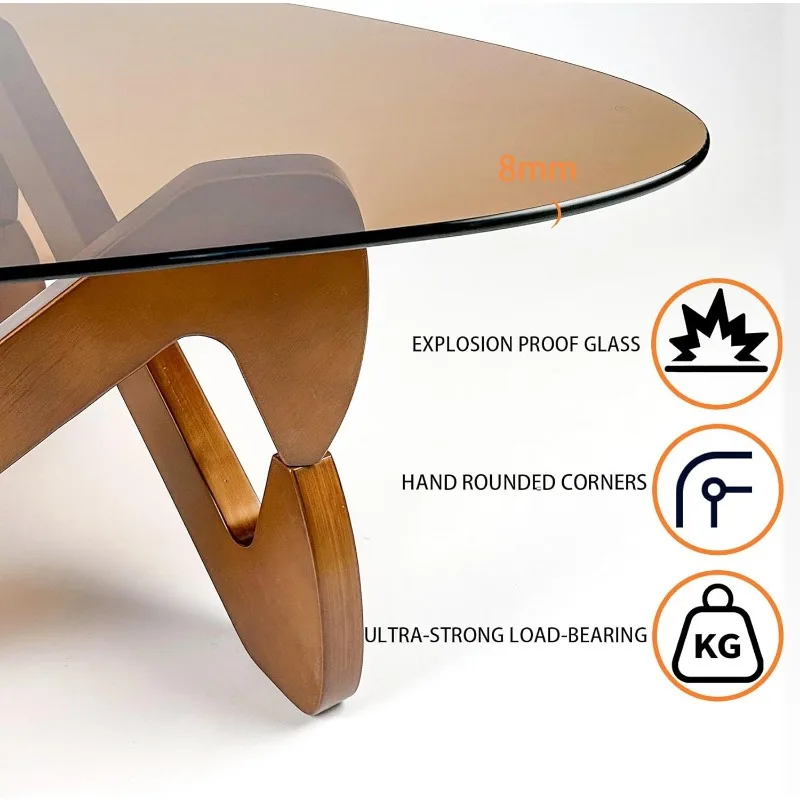
Balance and Visual Distribution
Beyond physical measurements, consider the visual equilibrium of your space:
- Distribute visual weight throughout the room rather than concentrating it in one area
- Use negative space intentionally to give the eye “rest” around substantial pieces
- Balance the horizontal mass of the table with vertical elements like lamps or artwork
- Consider asymmetrical balance—countering the table’s weight with a collection of smaller items elsewhere
- Use color strategically to enhance or diminish the visual impact of the table
Understanding these fundamentals creates the foundation for expert room arrangement around large coffee tables, ensuring both visual harmony and practical functionality.
Room-Specific Layout Strategies for Different Spaces
Every room presents unique challenges and opportunities when incorporating an oversized coffee table. Let’s explore strategies tailored to specific room dimensions.
In Compact Living Rooms (Under 200 sq ft/18.5 sq m)
Working with limited floor space requires strategic choices:
- Opt for round or oval tables to eliminate sharp corners that interrupt flow
- Choose tables with visible legs rather than solid bases to create visual lightness
- Position the table slightly off-center if necessary to maintain clear pathways
- Consider glass or acrylic tops to reduce visual weight and create the illusion of space
- Limit other furniture pieces to essential items only to avoid crowding
Even in smaller spaces, a carefully chosen oversized table can work beautifully—sometimes better than multiple small tables that create visual clutter.
In Standard Living Rooms (200-300 sq ft/18.5-28 sq m)
With moderate space, focus on creating balanced arrangements:
- Center the coffee table within your primary seating group
- Maintain equal distances between the table and surrounding seating when possible
- Consider rectangular tables for rectangular rooms, round tables for square rooms
- Ensure 24-30 inches between the table and TV/media cabinet for comfortable viewing
- Create secondary seating areas with accessible pathways to the main grouping
Most American homes feature living rooms in this size range, making it the standard scenario for coffee table placement. The additional floor space allows for more flexibility while still requiring thoughtful planning.
Our mid-century modern glass-top coffee tables collection offers excellent options for creating visual spaciousness in standard-sized rooms.
In Open-Concept and Large Living Spaces (300+ sq ft/28+ sq m)
Larger spaces present different challenges:
- Use the table as a central anchor for floating furniture arrangements
- Create distinct conversation zones with the coffee table as the heart
- Consider extra-large tables (48+ inches) that match the room’s grand scale
- Maintain visual connection between separated areas through cohesive styling
- Use area rugs to reinforce the boundaries of the coffee table grouping
In expansive spaces, an oversized coffee table prevents furniture from feeling randomly scattered by creating a gravitational center that organizes the entire arrangement.
Optimal Seating Arrangements Around Your Statement Piece
The relationship between your coffee table and seating determines both the comfort and conversation quality in your living space.
With Linear Sofas and Loveseats
For traditional sofa arrangements:
- Center the coffee table along the length of the sofa
- Maintain 16-18 inches between the sofa edge and table for comfortable leg room
- Consider asymmetrical arrangements with the table slightly closer to the sofa than to facing chairs
- For two facing sofas, ensure the table is at least 2/3 the length of the shortest sofa
- Allow for easy access to seating from all sides that have adjacent seating
The classic sofa-plus-chairs arrangement benefits tremendously from an oversized coffee table, as it bridges the conversational gap between facing seats while providing ample surface for everyone.
With Sectional Sofas
Sectionals require special consideration:
- Match rectangular tables with L-shaped sectionals, placing the longer side parallel to the longer sectional segment
- Consider round or square tables for U-shaped sectionals to provide equal access from all seats
- Position the table centered on the middle section of the sectional, not necessarily in the corner
- Ensure every seat can reach the table without stretching or standing
- Allow for at least one generous access point to enter the seating area
Working with coffee tables for large sectionals presents unique challenges since sectionals already command significant floor space. The key is finding pieces that complement rather than compete with your sectional’s footprint.
With Multiple Seating Groups
For larger spaces with distinct seating areas:
- Use the coffee table to define the primary conversation area
- Create secondary seating groups with their own smaller tables
- Ensure sight lines between groups remain open for visual connection
- Position the oversized table in the most frequently used seating arrangement
- Maintain consistent style language between the main and secondary tables
Multiple seating groups allow for more intimate conversations while still accommodating larger gatherings—with your oversized coffee table anchoring the main social hub.
Defining Your Space with Area Rugs and Flooring Strategies
The floor beneath your coffee table plays a crucial role in defining your space and enhancing your table’s presence.
Rug Size and Placement Fundamentals
- Select a rug at least 24 inches larger than your coffee table on all sides
- Choose between three placement options: all furniture legs on the rug, only front legs on, or just the coffee table on the rug
- For oversized tables, the “all legs on” approach creates the most cohesive look
- Extend the rug 18-24 inches beyond the coffee table on all sides at minimum
- Consider the shape relationship—rectangular rugs with rectangular tables, round rugs with round tables
The rug essentially creates a “room within a room,” defining the conversation area and providing a proper stage for your statement coffee table.
Material and Height Considerations
- Low-pile rugs provide stable support for coffee table legs
- Flat-weave rugs in geometric patterns complement mid-century aesthetics
- Consider wool, jute, or sisal for authentic mid-century material harmony
- Choose colors that either highlight or downplay the table’s prominence
- For mixed-material tables (like wood and glass), select rugs that pick up secondary colors from the wood tones
The relationship between large rectangular and round mid-century tables and your flooring choices significantly impacts the overall visual harmony of your space.
Creating Mid-Century Harmony: Complementary Furniture Selection
Your coffee table doesn’t exist in isolation—it’s part of a design ecosystem where each element influences the others.
Complementary Seating Styles
- Pair oversized coffee tables with substantial seating (84-inch sofas or sectionals)
- Look for seating with similar design language: clean lines, tapered legs, minimal ornamentation
- Create balance with both arm and armless chairs to vary the visual weight
- Consider seat height in relation to table height—mid-century sofas often sit lower than contemporary ones
- Choose pieces that share material elements with your coffee table for cohesion
The classic mid-century aesthetic features furniture that appears to float above the floor on slender legs—a principle that applies to both your coffee table and surrounding seating.
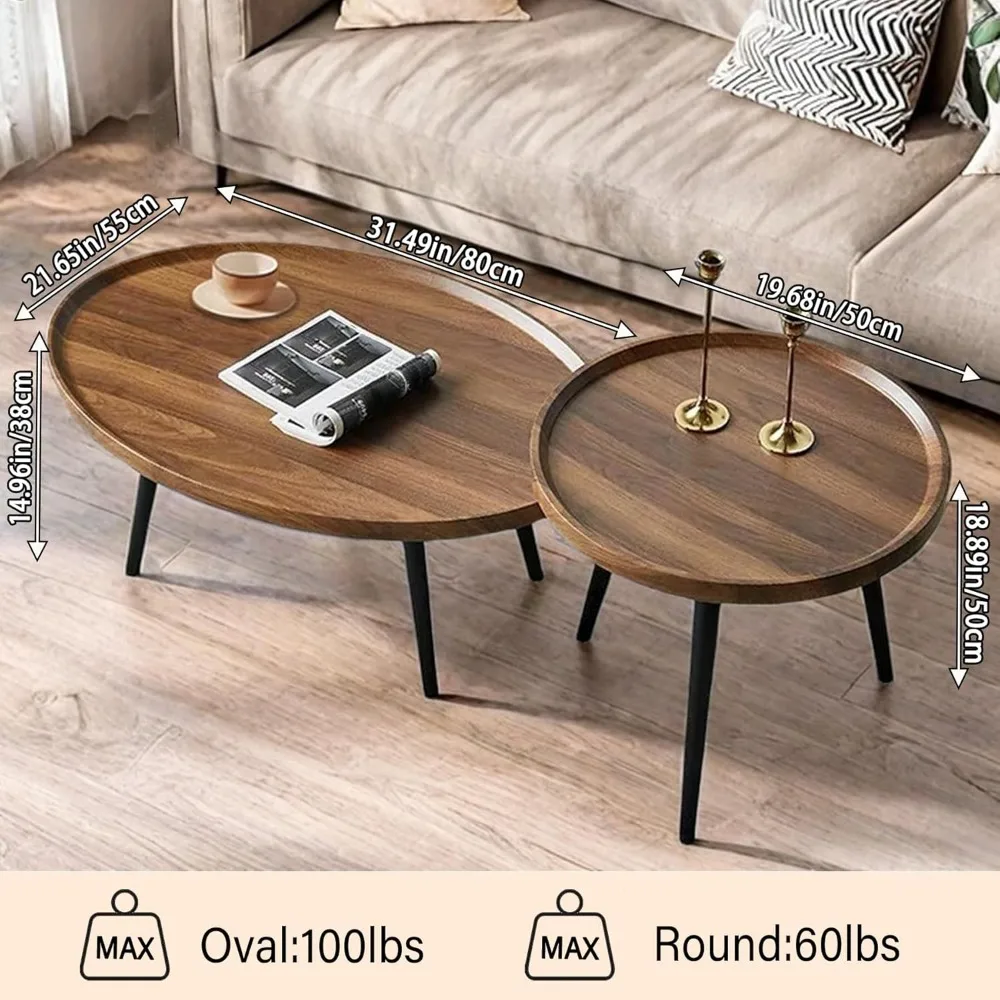
Selecting Harmonious Side Tables and Accent Furniture
- Choose side tables that complement rather than compete with your coffee table
- Consider nesting coffee tables as versatile companions to your main piece
- Keep accent furniture in a similar material palette to maintain cohesion
- Look for secondary pieces with complementary, not identical, design features
- Vary heights intentionally to create visual interest without competition
Side tables and accent pieces should act as supporting characters in your design story, enhancing the coffee table’s role without trying to upstage it.
Creating Balance with Storage and Display Furniture
- Balance the horizontal presence of the table with vertical storage pieces
- Use bookcases and wall units to frame the seating area from the perimeter
- Select credenzas and consoles with proportions that harmonize with your coffee table
- Maintain consistent material choices or intentional contrasts throughout
- Consider the negative space between large pieces to prevent visual crowding
Vertical elements create the necessary counterbalance to your coffee table’s horizontal mass, resulting in a room that feels purposefully designed rather than bottom-heavy.
Material and Texture: Enhancing Your Mid-Century Aesthetic
Material choices significantly influence how your coffee table integrates into your overall design scheme.
Wood Tones and Finishes
- Decide between matching wood tones throughout the room or creating intentional contrast
- Classic mid-century woods include walnut, teak, oak, and rosewood
- Balance warm woods (walnut, teak) with cooler elements elsewhere in the room
- Consider how wood grain direction affects visual perception of size
- Allow signature woods to take center stage by keeping other elements simple
The rich, warm wood tones typical of mid-century design create a sense of authenticity that’s difficult to achieve with other materials.
Incorporating Materials Beyond Wood
- Glass tops reduce visual weight while maintaining surface area
- Stone elements (marble, travertine) add textural interest and luxury
- Metal accents (brass, chrome) introduce reflective qualities that enhance light
- Consider mixed-material tables that combine the warmth of wood with the lightness of glass
- Use material contrasts to create visual interest without adding clutter
Our collection of rectangular coffee tables showcases how different materials affect the presence and perception of these substantial pieces.
Styling Your Oversized Surface: The Art of Restraint
With generous surface area comes the responsibility to style thoughtfully rather than fill every inch.
The Rule of Three: Composition Basics
- Group objects in odd numbers (typically three) for visual interest
- Vary heights within your groupings to create dimension
- Create triangular arrangements rather than linear ones
- Maintain ample negative space around groupings
- Balance larger objects on one side with multiple smaller objects on the other
The expanded canvas of an oversized coffee table allows for more sophisticated styling arrangements—but requires discipline to avoid cluttered results.
Curating Objects with Purpose
- Select 3-5 statement pieces rather than numerous small objects
- Include functional items (books, candles, small boxes) alongside purely decorative ones
- Use trays to corral smaller items and create visual boundaries
- Choose objects that reflect mid-century design principles: organic shapes, clean lines
- Rotate seasonal or special objects to keep the display fresh without accumulating clutter
Understanding glass-top mid-century coffee table layout tips helps you maximize both the aesthetic appeal and functionality of these versatile surfaces.
Troubleshooting Common Space Planning Challenges
Even with careful planning, challenges may arise when incorporating oversized coffee tables. Here are solutions to common issues.
When Your Room Feels Overwhelmed
- Switch to tables with visible legs that create airflow beneath
- Consider glass-topped or partially glass models to reduce visual heaviness
- Position mirrors strategically to create the illusion of more space
- Increase lighting around the table area to prevent shadows that make spaces feel smaller
- Use lighter colors for the table surface or surrounding upholstery
- Draw the eye upward with tall lamps or artwork that balances the low, horizontal table
These adjustments can transform a cramped-feeling room into one that breathes despite the substantial coffee table at its center.
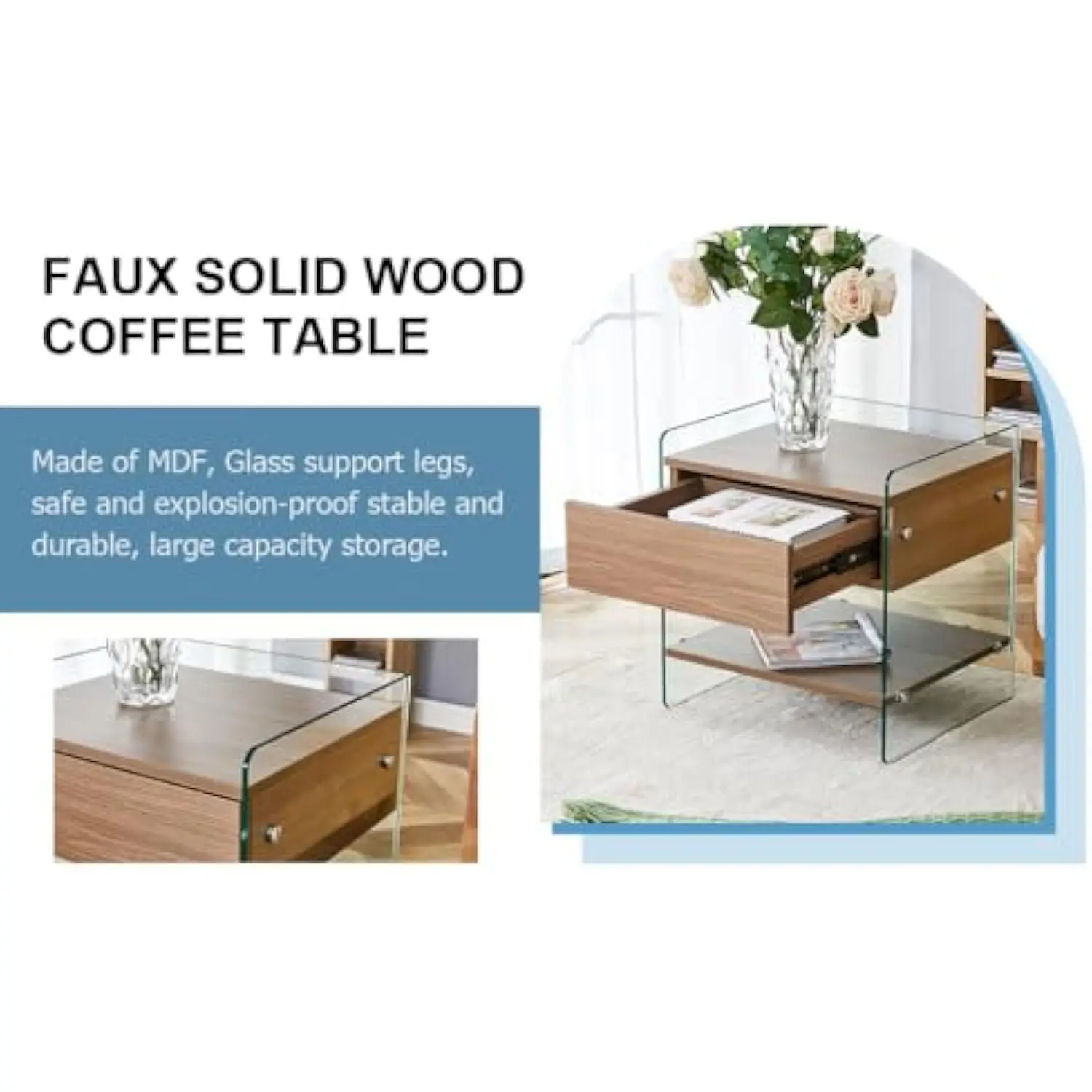
When Traffic Flow Becomes Problematic
- Consider round or oval tables in tight spaces to eliminate sharp corners
- Rotate rectangular tables to create better pathways through the room
- Adjust the entire furniture arrangement rather than just the table position
- Create clear entry and exit points to the seating area
- Consider custom solutions with dimensions tailored to your specific space
Traffic flow issues often resolve with minor adjustments rather than requiring complete replacement of your statement piece.
When the Visual Balance Feels Off
- Add large-scale art on walls opposite the table to create counterbalance
- Incorporate substantial lighting fixtures that draw the eye upward
- Distribute visual weight through thoughtful accessory placement
- Use textiles (pillows, throws) to add softness that balances the table’s structure
- Consider a substantial area rug that frames and contextualizes the table
Creating a statement piece with large coffee tables requires attention to the entire room’s balance, not just the table itself.
Lighting Considerations for Your Statement Piece
Strategic lighting enhances both the functionality and aesthetic impact of your coffee table.
Ambient Lighting to Frame the Space
- Position overhead lighting centered above the coffee table area
- Use dimmers to adjust lighting based on activities and time of day
- Consider large pendant lights or chandeliers that visually balance the table’s size
- Layer ambient lighting from multiple sources to eliminate harsh shadows
- Ensure even illumination across the entire seating area
Proper ambient lighting creates the foundation for your coffee table display while facilitating comfortable activities around it.
Accent Lighting to Highlight the Table
- Position floor lamps adjacent to the table to cast flattering light across the surface
- Use table lamps on nearby surfaces to create mid-level lighting
- Consider how materials (especially glass or metal) interact with direct light sources
- Highlight special objects or table features with focused lighting
- Create evening ambiance with small rechargeable lamps or candles on the table surface
Mid-Century Modern Solid Wood Coffee Tables, Mid-Century Modern Teak Coffee Tables
$879.95 Select options This product has multiple variants. The options may be chosen on the product pageMid-Century Modern Danish Coffee Tables, Mid-Century Modern Oval Coffee Tables, Mid-Century Modern Solid Wood Coffee Tables
$390.05 Select options This product has multiple variants. The options may be chosen on the product pageMid-Century Modern Glass Top Coffee Tables, Mid-Century Modern Glass Top Side & End Tables
$460.58 Select options This product has multiple variants. The options may be chosen on the product pageMid-Century Modern Glass Top Coffee Tables, Mid-Century Modern Vintage Coffee Tables, Mid-Century Modern Vintage Side & End Tables
$725.36 Select options This product has multiple variants. The options may be chosen on the product pageMid-Century Modern Large Coffee Tables, Mid-Century Modern Rectangular Coffee Tables
$603.26 Select options This product has multiple variants. The options may be chosen on the product pageMid-Century Modern Marble Top Coffee Tables, Mid-Century Modern Rectangular Coffee Tables, Mid-Century Modern White Coffee Tables
Price range: $163.28 through $189.22 Select options This product has multiple variants. The options may be chosen on the product page
Frequently Asked Questions: Expert Answers to Common Concerns
What is the ideal distance between a sofa and an oversized coffee table?
The optimal distance is 16-18 inches (40-46 cm) between the edge of your sofa and your coffee table. This provides comfortable leg room while keeping the table within easy reach for setting down drinks or retrieving items. For deeper sofas or when including ottomans, you might extend to 20 inches, but anything beyond that begins to feel disconnected.
Can an oversized mid-century coffee table work in a small living room?
Yes, but with strategic choices. In rooms under 200 square feet, limit your oversized table to 36-40 inches in length and consider glass tops or elevated designs that create visual lightness. Ensure at least 30 inches for major pathways, and select other furniture pieces with care to avoid overcrowding. Sometimes one substantial piece creates better flow than multiple smaller pieces.
What shape of oversized coffee table is best for my sectional sofa?
For L-shaped sectionals, rectangular coffee tables work best, positioned parallel to the longest section. For U-shaped sectionals, square or round tables provide equal access from all seats. The table should fill approximately 2/3 of the open space created by the sectional arrangement without restricting entry points to the seating area.
How do I choose between wood, glass, or stone for my coffee table if space feels tight?
In tighter spaces, glass offers significant advantages by maintaining visual openness while providing full functionality. Mixed materials—like wood frames with glass tops—combine warmth with visual lightness. Solid stone or wood tables create stronger presence but may feel imposing in small rooms unless elevated on slender legs that allow visible floor space beneath.
Finding Your Perfect Piece: Authenticity and Quality Markers
Identifying Authentic Mid-Century Design Characteristics
- Look for organic shapes with clean, uncluttered lines
- Authentic pieces feature tapered legs that angle outward
- Minimal ornamentation lets materials and craftsmanship speak for themselves
- Original mid-century pieces typically stand 16-18 inches tall—lower than contemporary tables
- Edges may feature subtle rounding or beveling rather than sharp angles
These design signatures distinguish genuine mid-century pieces from generic reproductions, creating a more cohesive aesthetic when paired with other elements.
Quality Considerations for Long-Term Satisfaction
- Examine joinery techniques—look for dovetail joints, mortise and tenon connections
- Solid wood construction offers greater longevity than veneered particleboard
- Check weight and stability—quality pieces have substantial heft
- Assess finish quality—hand-rubbed oils enhance grain while providing protection
- Consider sustainably harvested wood sources for environmental responsibility
Our collection of solid wood coffee tables demonstrates these quality markers that ensure generations of use and enjoyment.
Bringing It All Together: Creating Your Mid-Century Space Plan
Successful integration of an oversized mid-century coffee table requires balancing multiple considerations—scale, flow, proportion, materials, and styling. By approaching your space planning systematically, you can create a living area that showcases your statement piece while maintaining comfort and functionality.
Remember that negative space is as important as the furniture itself. Don’t feel compelled to fill every inch; instead, create breathing room that allows your coffee table to command attention without overwhelming the space.
The enduring appeal of mid-century design lies in its timeless functionality. By applying these principles to your space planning, you’ll create a room that feels both current and classic—anchored by a coffee table that serves as both practical surface and design statement.
Are Oversized Coffee Tables Worth the Design Challenge?
Despite the planning required, oversized coffee tables deliver unique benefits that standard tables simply cannot match. The generous surface area transforms how you use your living space, accommodating everything from family game nights to elaborate entertaining with ease.
Beyond functionality, these statement pieces create architectural interest and showcase authentic design in ways that smaller pieces cannot. They anchor rooms visually while providing practical surfaces that adapt to your changing needs throughout the day.
The investment in proper space planning pays dividends in both aesthetics and livability, creating a room that works as beautifully as it looks.
How Do Different Table Materials Impact Space Perception?
Material choices significantly influence how your coffee table affects spatial perception. Glass creates visual lightness while maintaining full surface functionality—ideal for smaller spaces. Solid wood grounds the room with warmth but creates stronger visual presence. Stone surfaces add luxury and textural interest but increase perceived weight.
Mixed materials offer compelling compromises—wood frames with glass inserts combine warmth with openness, while metal accents introduce reflective qualities that enhance light throughout the room.
Can You Mix Authentic and Reproduction Pieces Successfully?
Blending original and reproduction furniture can create stunning results when approached thoughtfully. Prioritize authentic pieces for your largest, most visible items (like your coffee table), then complement with quality reproductions for secondary elements. Focus on consistent proportions, materials, and design language rather than provenance to create a cohesive look that celebrates mid-century aesthetics regardless of each piece’s origin.






